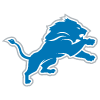Restructure or release? Ezekiel Elliott, Michael Thomas among eight NFC players to keep an eye on
As we approach free agency (and the NFL draft), coaches and front office executives are hard at work on their team-building strategies for the 2022 season and beyond. With the salary cap estimated at $208.2 million per club for the coming campaign, some teams are sitting pretty (the Dolphins and Jaguars, for example, are flush with cash), while others have tough decisions to make (the Saints and Packers are deep in the red).
This is restructure/release season. Some franchises simply need to straighten out their books, while others will aim to free up cash to target specific players in free agency or on the trade block. On that latter front, this offseason looks like it could be particularly interesting because of all the potential movement among quarterbacks, the priciest commodities in the sport.
These are fun times for me. I love setting projected performance to salary metrics. Contracts are typically based on past performance, which is, after all, the best data on individual players that we have available. But adding in the filter of possible substitutes in the open market, along with how else the money could be realistically spent in order to earn wins … That’s my kind of party! This is where the analytics really come into play. For example, a classic debate: Do you pay big money for the top-end running back … or sign a closer-to-average RB and use the remaining dough to upgrade the offensive line? Oftentimes, people argue such matters inside a vacuum, only considering one end of the discussion (the top-end running back) without seriously exploring the available options behind Door No. 2.
I’m endlessly fascinated by this stuff and could go on about the hypotheticals forever. But in the interest of providing an article — and not a textbook — I’m looking to focus my lens on a more distilled group of players today. Merging 2022 contract information with my models estimating individual win-share totals for the coming season (using computer vision, advanced data, conventional statistics, Next Gen Stats, etc.), I’m spotlighting players who are so misaligned with their contracts that they could be due for a restructure or release.
NOTE: All financial figures below were pulled from Over The Cap at publishing, with the players presented in alphabetical order.
Related Links
- 2022 NFL free agency: One free agent each NFC team must keep
- 2022 NFL franchise tag primer: Ten most intriguing candidates
- 2022 NFL offseason: All 32 teams' QB situations ahead of free agency, draft
- Daniel Jeremiah 2022 NFL mock draft 2.0: Bills land another playmaking WR for Josh Allen
- How Charley Taylor almost became a Dallas Cowboy
- Top 10 free-agent signings of the 2021 NFL season
Collins’ 2022 cap number: $16,918,750
Collins’ dead cap number: $9,600,000
Commanders’ estimated cap space: $31,899,739
Pro Football Focus attributed Collins with a 110.6 passer rating allowed in coverage in 2021, which ranked 36th out of 48 safeties who were targeted at least 30 times. With the second-highest cap hit among NFL safeties, Collins’ deal is hard to reconcile with his performance, especially given the talent of Washington’s defensive front, as well as the other needs for this team.
Elliott’s 2022 cap number: $18,220,000
Elliott’s dead cap number: $30,080,000
Cowboys’ estimated cap space: -$22,154,885
Dallas currently projects to have the third-worst cap situation in the NFL, forcing some interesting choices to be made. Elliott carries the highest 2022 cap hit among NFL running backs — it’s 8.6 percent of the Cowboys’ entire salary cap. Zeke posted a negative-25 rushing yards over expected in 2021, per Next Gen Stats, ranking 33rd of the 49 running backs who logged at least 100 carries. Now, that dead cap figure makes an outright release inconceivable. But a restructure could make plenty of sense, especially considering Dallas has a younger back who could use more burn in Tony Pollard.
Flowers’ 2022 cap number: $23,239,000
Flowers’ dead cap number: $12,853,000
Lions’ estimated cap space: $21,203,118
It’s hard to justify allotting 11 percent of the Lions’ salary cap to a player who, according to Next Gen Stats, has only played 27 percent of possible snaps over the past two seasons (582 of 2,159). Not to mention, computer vision counts just 18 total pressures for Flowers in that time frame; for context, eight players eclipsed 18 pressures over four-game spans this past season. Given the number of needs that exist on Detroit’s rebuilding roster, the Lions need to take action here, one way or another.
Goldman’s 2022 cap number: $11,810,407
Goldman’s dead cap number: $5,150,000
Bears’ estimated cap space: $25,329,726
With a completely new regime in Chicago, you know the entire roster is under review. Goldman recorded just a 3.9 percent pressure rate in 2021, his lowest figure since NGS started tracking that in 2016. That’s a big cap number for a big man who could be on the decline.
Higbee’s 2022 cap number: $8,050,000
Higbee’s dead cap number: $2,850,000
Rams’ estimated cap space: -$21,623,914
My models love later-round tight ends in this draft class. Not to say any of them should be expected to immediately replicate Higbee’s production, but again, we’re not just thinking of the one-for-one tradeoff here. This is about the big picture, how everything affects the broader roster and spending. Higbee carries the eighth-highest cap hit at the tight end position, while the Rams currently have the fourth-worst cap situation, at more than $21 million in the red. According to Next Gen Stats, Higbee just posted a career-low 5.3 air yards per target in 2021, down from 7.5 in 2016-2020.
Kendricks’ 2022 cap number: $13,530,000
Kendricks’ dead cap number: $5,960,000
Vikings’ estimated cap space: -$16,040,779
Minnesota has several potential subjects for this piece, but Kendricks edges out the others based on how the regime change might impact the defense’s operations. Next Gen Stats and I both agree he’s a valuable piece. In fact, he is one of just four players (along with Bobby Wagner, Lavonte David and Demario Davis) who eclipses 40 QB pressures and 350 defensive stops in the NGS era, going back to 2016. But his cap hit is robust, ranking eighth among all off-ball linebackers, and the new guys might look to reallocate some of those funds.
Smith’s 2022 cap number: $27,661,250
Smith’s dead cap number: $12,380,000
Packers’ estimated cap space: -$42,718,970
Are you seated? This one is hefty. At present, Smith accounts for a whopping 13.2 percent of Green Bay’s 2022 salary cap. And the Packers could very well be looking to rain cash upon Davante Adams and Aaron Rodgers. Going back to 2019, Smith’s 2.7 percent sack rate ranks ninth in the NFL, per NGS. But a back injury just sidelined him for 16 regular-season games last year — and he turns 30 in September.
Thomas’ 2022 cap number: $24,700,000
Thomas’ dead cap number: $22,700,000
Saints’ estimated cap space: -$76,176,740
At the moment, the Saints have the worst cap situation in the NFL by a wide margin, currently $76 million in the hole. Thomas, whose cap number accounts for nearly 12 percent of New Orleans’ total figure, has played in just seven total games since his record-setting 2019 campaign. Consequently, my models see a lot of risk on the receiver when it comes to return on investment. The $22.7 million dead cap figure makes cutting him nonsensical, though a restructure might be in order. Mickey Loomis could also look to trade him after June 1, though, and significantly lower the dead money hit in 2022. Even with all the missed time of late, Thomas still leads the NFL with 327 receptions (and an 84.9 percent catch rate) on short passes since 2016, per NGS.
Follow Cynthia Frelund on Twitter.
Source: Read Full Article
















